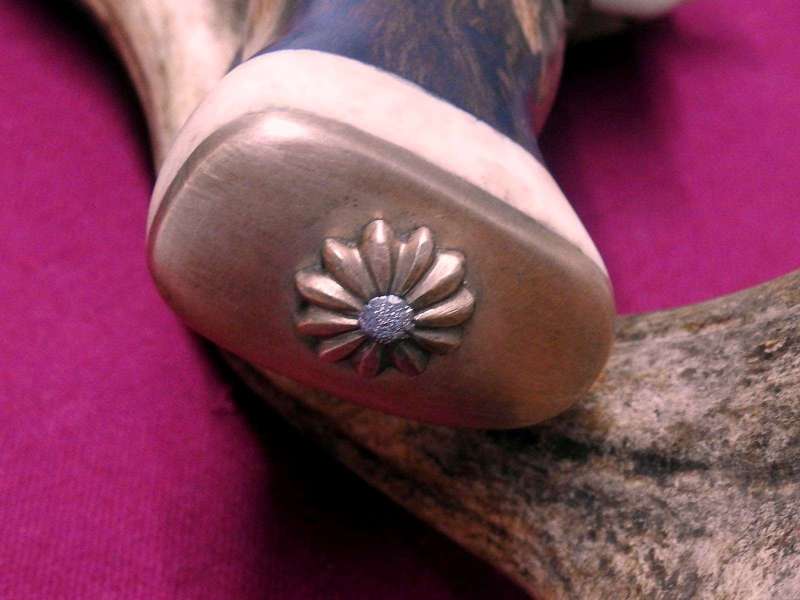In a sense, this knife was in the making for over twenty years. At least more than twenty years ago I drew the picture of a soaring eagle for the purpose of using it to adorn a knife. Initially, I wanted to etch the image on the blade, but I made this blade with a ridge, thus it could not be fitted on it. So I decided to use it on the leather sheath instead.
The blade is mirror-polished and it was a major PITA to take a picture. One day I will simply have to invest time and money in a better lighting setup. I just don’t want to.
The handle is made from the same material as the kestrel knife, but the inserts are only from a birch polypore. The big thick white pieces contrast nicely with the wood. Which has in my opinion a much more interesting pattern than the previous one.
To take a picture of the embossed sheath was a bugger too. It is too shiny and in most pictures, it gleamed like a naked bum. At some point I had to work with what I had, I could not re-take the photos forever.
Carving and embossing all the feathers was fairly difficult, especially the tips of the wings, and I am sure it could be done better. Sometimes I think I am punishing myself with these elaborate designs. But despite its flaws, this time I do like the end result. I think it looks handmade, but not ineptly made.
The metal fittings are from wire-brushed bronze and the washer at the end of the peened tang is shaped like a chrysanthemum blossom. It is already acquiring patina. I was thinking about whether to let it age naturally or whether to speed up the process and I decided to let things to their natural progression.
With the blade over 17 cm long, it is a big boi. But weighing just about 392 g with sheath, it is not particularly heavy. And since the point of balance is at the forefinger just at the boundary between the white polypore and the wood of the handle, it feels very light and nimble in the hand.










Beautiful work Charly -- stunning!
Eagles being larger birds than kestrels, you naturally had to emboss the sheath of the larger of the two knives with a soaring eagle and the sheath of the smaller one with a kestrel. Both knives are wonderful and I’ll echo your mention of liking the end result despite whatever flaws you found in them.
Is the birch polypore bit a stabilised fungus? I would have thought it would be too soft for a handle?
Looks very cool!
Wow, that came out great!!
dangerousbeans @#3
See Charly’s last post for details of how he treated the polypore.
Charly
my correction of your assessment.
Thank you for the kind words.
@dangerousbeans These two knives were to test out the idea of a stabilized polypore as a handle material. I did learn about it a bit and I plan a big project with it next and I will probably write a series of posts just about that. The birch polypore is relatively soft when compared to other common polypores like red belted conk or tinder conk, but after it is stabilized with resin it is hard enough to use for knife handles.
i suppose much like softer woods once you fill it with resin it becomes as hard as the resin. it’s an interesting idea
It looks amazing, as always.